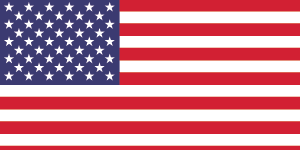Product
Polyethylene Furanoate Price Trend and Forecast
Polyethylene Furanoate Price Trend and Forecast
Polyethylene Furanoate Regional Price Overview
Get the latest insights on price movement and trend analysis of Polyethylene Furanoate in different regions across the world (Asia, Europe, North America, Latin America, and the Middle East & Africa).
Polyethylene Furanoate (PEF) Price Trend for the First Half of 2025
Asia
In the first half of 2025, the PEF market in Asia showed a mostly downward trend. Demand from key sectors like textiles and packaging remained soft, and this weighed heavily on pricing. The sluggish performance of upstream materials further dampened sentiment, while high inventory levels across the region limited buying interest.
Polyethylene Furanoate Price Chart

Please Login or Subscribe to Access the Polyethylene Furanoate Price Chart Data
Though there was a short-term improvement in supply conditions after the Lunar New Year holidays, it failed to provide meaningful support to prices. The overall environment remained cautious, with buyers holding back in anticipation of better deals amid weak downstream activity.
Europe
PEF prices in Europe also moved lower throughout H1’25. Weak demand from sustainable packaging and consumer goods sectors played a major role in keeping the market subdued. Structural issues in the regional chemical industry, including oversupply and underutilization of production capacity, added pressure.
Some uncertainty in logistics, particularly at key ports, disrupted supply chains but was not enough to support price increases. Additionally, changing contract dynamics and limited investment in long-term offtake added to the cautious sentiment. A generally soft economic environment and slow industrial recovery contributed to the lacklustre market behaviour.
North America
In North America, PEF prices experienced some fluctuations during H1’25 but generally remained on a soft path. The beginning of the year saw a brief rise in prices due to expectations of supply tightness, but this was short-lived. As upstream materials became more available and inventories rose, prices gradually eased. Demand from end-use sectors like bio-based plastics and sustainable textiles did not pick up as strongly as expected, and this limited any major market momentum. Weather disruptions early in the year had only a temporary impact on operations, and the overall tone of the market remained subdued.
Analyst Insight
According to Procurement Resource, PEF prices are likely to stay under pressure in the coming months unless stronger demand returns or supply becomes more limited.
Polyethylene Furanoate (PEF) Price Trend for the Year 2024
Asia
Throughout 2024, Polyethylene Furanoate (PEF) prices in the Asia-Pacific region experienced fluctuating movements largely shaped by shifts in upstream markets and end-use demand. In the first half of the year, prices remained relatively firm due to high feedstock costs, which were impacted by rising crude oil prices and supply chain constraints. However, as the year progressed, weakening demand from downstream sectors like textiles and packaging led to a price correction.
The spandex and PTMEG industries, key users of PEF’s raw materials, reduced operations due to off-season effects and low consumer demand. Consequently, both Q3 and Q4 saw a decline in PEF prices, further weighed down by subdued regional economic sentiment and high inventories.
Europe
In Europe, PEF prices trended upward in the first half of 2024, supported by increasing raw material costs and tight supply conditions. Feedstock shortages and high energy prices due to geopolitical tensions pushed production costs higher. However, by mid-year, prices began to lose momentum as demand from sectors such as automotive and packaging showed signs of weakening.
A seasonal lull and lower-than-expected economic activity further contributed to reduced buying interest. Toward the end of the year, despite minor supply constraints and plant restarts, overall sentiment remained cautious. Limited recovery in consumer-driven industries and macroeconomic challenges such as inflation and political instability kept pressure on PEF pricing, leading to a softening trend in the final quarter.
North America
In North America, the PEF market followed a mixed pattern over 2024. The year began with price increases driven by supply disruptions and firm demand from the textile and polymer industries. A key factor was the surge in feedstock prices during the second quarter, caused by feedstock scarcity and logistical challenges.
However, as the year moved forward, these pressures eased. The second half of the year saw a consistent drop in prices due to falling feedstock costs, reduced energy prices, and subdued demand from key sectors. Imports also increased, leading to oversupply concerns that contributed to the downward pricing trend during the last quarter.
Analyst Insight
According to Procurement Resource, the PEF market is expected to remain under pressure unless demand from end-use industries rebounds. A stable outlook is projected for early 2025, provided feedstock trends and global economic conditions improve.
Polyethylene Furanoate Price Trend for the Second Half of 2023
Asia
The Asian polyethylene furanoate market saw an underwhelming run at the price index during the last two quarters of 2023. Since the said biopolymer is sourced originally from sugar sources like cane sugar bagasse, corn starch, etc., the market variations in these agricultural markets also influenced the polyethylene furanoate prices.
Quarter three began with borderline consistency in the Asian market, since the supply and demand outlooks were largely equitable, so the prices tottered around similar lines with minimal fluctuations within a confined limit. But this consistency was very short-lived as the prices came crashing down in the following quarter.
International demands saw a significant decline after the shipping issues started emerging in the Red Sea, which created a ripple effect in the polyethylene furanoate supply chain and prompted the prices to fall in both Indian and Chinese markets. Overall, mixed market sentiments were witnessed.
Europe
The European polyethylene furanoate market was observed to be struggling to maintain its prices during the given period. Quarter three was generally economically relaxed in the region as the inflationary pressure finally relaxed a little bit after a long time. So, the upstream costs had come down significantly, pushing the Polyethylene Furanoate price trend downwards. The price graph continued its downward journey in the latter quarter as well. Industrial activities were low, and the plunging global trade also influenced this market behavior. Overall, a dipping price trend was witnessed.
North America
The polyethylene furanoate price trend in America was not much different from the European price trend. The prices were found to be wavering at the lower end of the curve here as well. A big gap in the supply and demand dynamics of the polyethylene furanoate was the reason behind such a lackluster performance. The inventories were excessively pressured, which compelled suppliers to discount the prices in order to promote the product movement. Conclusively, a plunging trajectory was observed in H2’23.
Analyst Insight
According to Procurement Resource, the Polyethylene Furanoate price trends are expected to continue to fluctuate going forward, given the current demand outlook and pricing fundamentals.
Polyethylene Furanoate Price Trend for the First Half of 2023
Asia
In the Asia-Pacific countries, the prices of polyethylene furanoate enjoyed a high number of orders from international buyers, supporting the rates of exports in the first quarter of 2023. The demand from the downstream industries, high operational costs, and positive momentum of the packaging sector also supported the rise in the prices of polyethylene furanoate.
The market was also benefitted by the rising cost of raw materials but only till the first half of the second quarter. The latter half of the second quarter suffered from low support from crude oil costs, weak demand, and a declining raw materials sector.
Europe
The European market for polyethylene furanoate was adversely affected by the decline in the sales of bottles and beverages industries as the purchasing potential of buyers fell consistently.
The prices of polyethylene furanoate were also affected by the declining costs of crude oils, the struggling economy, low-cost support from the feedstock markets, and negligible restocking by traders. The performance of the upstream industries also remained in the negative zone during the first two quarters of 2023, eventually causing the price trend of polyethylene furanoate to decline.
North America
In North America, a high supply of polyethylene furanoate hampered its prices as the demand from the end-user sector was weak throughout the first two quarters of 2023. In addition to this, the labor crisis and rising cost of transportation and production further proved to be a challenge for the market activities. The consumers also showcased feeble consumption rates, and thus, with low demand, striking rates of inflation, and interest, pushed the prices of polyethylene furanoate towards a downward trajectory.
Analyst Insight
According to Procurement Resource, the price trend of Polyethylene Furanoate is expected to face southwards as the low cost of crude oil and pressure of no demand are estimated to affect the market sentiments of polyethylene furanoate negatively.
Procurement Resource provides latest prices of Polyethylene Furanoate. Each price database is tied to a user-friendly graphing tool dating back to 2014, which provides a range of functionalities: configuration of price series over user defined time period; comparison of product movements across countries; customisation of price currencies and unit; extraction of price data as excel files to be used offline.
About Polyethylene Furanoate
Polyethylene Furanoate (PEF) is a semi-aromatic biodegradable thermoplastic polyester. It has high tensile strength, excellent heat resistance, is lightweight and can easily be moulded and thermoformed. Its superior properties make it an excellent alternative to PET ( Polyethylene terephthalate). Being an efficient biopolymer, it helps reduce the carbon footprint and also, and 2,5-furandicarboxylic acid (FDCA) can be derived from renewable feedstock C6 sugars.
Polyethylene Furanoate Product Details
| Report Features | Details |
| Product Name | Polyethylene Furanoate |
| CAS Number | 28728-19-0 |
| Industrial Uses | Polymers/Plastics, Food and Beverage Containers, Pharmaceuticals, Industrial Fibres, Fabrics |
| Chemical Formula | (C8H6O5)n |
| Synonyms | Polyethylene 2,5-furandicarboxylate, PEF |
| Molecular Weight | Variable |
| Supplier Database | Avantium Technologies B.V., Danone S.A., Toyobo Co., Ltd., Alpla |
| Region/Countries Covered | Asia Pacific: China, India, Indonesia, Pakistan, Bangladesh, Japan, Philippines, Vietnam, Iran, Thailand, South Korea, Iraq, Saudi Arabia, Malaysia, Nepal, Taiwan, Sri Lanka, UAE, Israel, Hongkong, Singapore, Oman, Kuwait, Qatar, Australia, and New Zealand Europe: Germany, France, United Kingdom, Italy, Spain, Russia, Turkey, Netherlands, Poland, Sweden, Belgium, Austria, Ireland Switzerland, Norway, Denmark, Romania, Finland, Czech Republic, Portugal and Greece North America: United States and Canada Latin America: Brazil, Mexico, Argentina, Columbia, Chile, Ecuador, and Peru Africa: South Africa, Nigeria, Egypt, Algeria, Morocco |
| Currency | US$ (Data can also be provided in local currency) |
| Supplier Database Availability | Yes |
| Customization Scope | The report can be customized as per the requirements of the customer |
| Post-Sale Analyst Support | 360-degree analyst support after report delivery |
Note: Our supplier search experts can assist your procurement teams in compiling and validating a list of suppliers indicating they have products, services, and capabilities that meet your company's needs.
Polyethylene Furanoate Production Processes
- Polyethylene Furanoate Production from Polymerization
PEF is produced by the polymerization of 2,5-furandicarboxylic acid (FDCA) and monoethylene glycol. The feedstocks are initially fed into the system, which turns them into a feed slurry. From there, it is transported to the reactors, where the esterification occurs in the presence of antimony gluconate as a catalyst. Then, vacuum and heat are applied to remove water and monoethylene glycol for polymerization to give the desired PEF.
Methodology
The displayed pricing data is derived through weighted average purchase price, including contract and spot transactions at the specified locations unless otherwise stated. The information provided comes from the compilation and processing of commercial data officially reported for each nation (i.e. government agencies, external trade bodies, and industry publications).
Assistance from Experts
Procurement Resource is a one-stop solution for businesses aiming at the best industry insights and market evaluation in the arena of procurement. Our team of market leaders covers all the facets of procurement strategies with its holistic industry reports, extensive production cost and pre-feasibility insights, and price trends dynamics impacting the cost trajectories of the plethora of products encompassing various industries. With the best analysis of the market trends and comprehensive consulting in light of the best strategic footstep, Procurement Resource got all that it takes.
Client's Satisfaction
Procurement Resource has made a mark for itself in terms of its rigorous assistance to its clientele. Our experienced panel of experts leave no stone unturned in ensuring the expertise at every step of our clients' strategic procurement journey. Our prompt assistance, prudential analysis, and pragmatic tactics considering the best procurement move for industries are all that sets us apart. We at Procurement Resource value our clients, which our clients vouch for.
Assured Quality
Expertise, judiciousness, and expedience are the crucial aspects of our modus operandi at Procurement Resource. Quality is non-negotiable, and we don't compromise on that. Our best-in-class solutions, elaborative consulting substantiated by exhaustive evaluation, and fool-proof reports have led us to come this far, making us the ‘numero uno' in the domain of procurement. Be it exclusive qualitative research or assiduous quantitative research methodologies, our high quality of work is what our clients swear by.
Table Of Contents
Our Clients

Get in Touch With Us

UNITED STATES
Phone:+1 307 363 1045

INDIA
Phone: +91 8850629517

UNITED KINGDOM
Phone: +44 7537 171117
Email: sales@procurementresource.com

